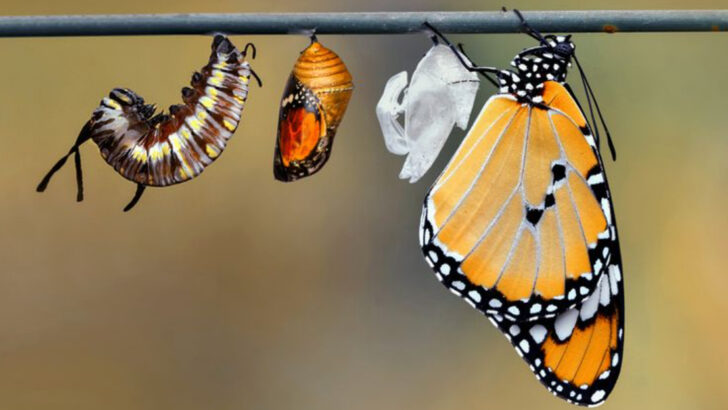The transformation of caterpillars into butterflies is a breathtaking natural phenomenon.
This metamorphosis, a testament to nature’s intricate beauty, involves fascinating changes that many might not be aware of.
From the moment a caterpillar hatches until it emerges as a vibrant butterfly, an array of surprising processes occurs.
Here are 13 intriguing facts that delve into this captivating journey.
Molt Multiple Times
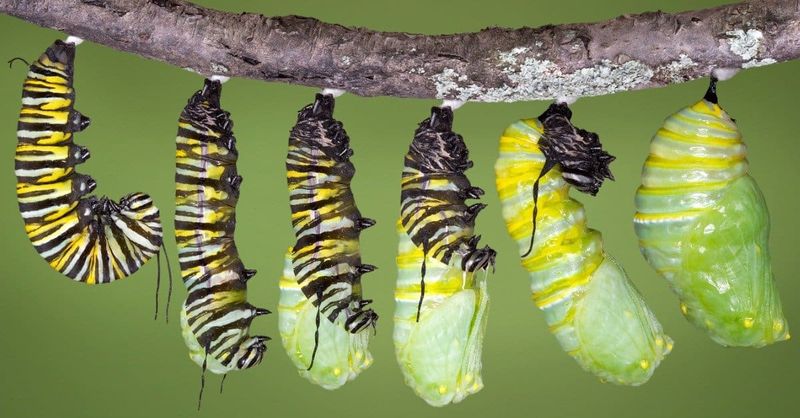
Caterpillars, much like seasoned actors changing costumes, undergo several molts before reaching the stage of metamorphosis.
It’s a process where they outgrow their skin and shed it, giving way to a new layer underneath. This molting is not just a mere change of attire; it’s essential for their growth.
Each molt is called an instar. These instars represent stages of growth, and most caterpillars experience about five of them. It’s a fascinating dance of growth and renewal, preparing them for the ultimate transformation.
A Liquid Diet
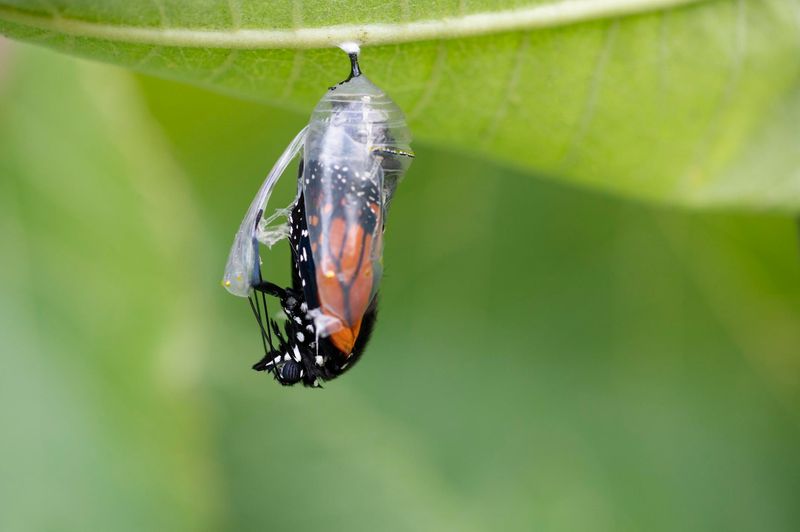
It’s not all about leaves! Many caterpillars supplement their diet with liquid. They often drink water droplets or sap, which helps them stay hydrated and efficiently digest their leafy meals.
The liquid diet doesn’t just quench their thirst but aids in necessary metabolic processes. Caterpillars have been observed to ingest dew and rainwater, especially before their final molt.
This consumption of liquid plays a critical role in their development, ensuring they remain healthy and ready for the next stage of their life cycle.
Pupa Period
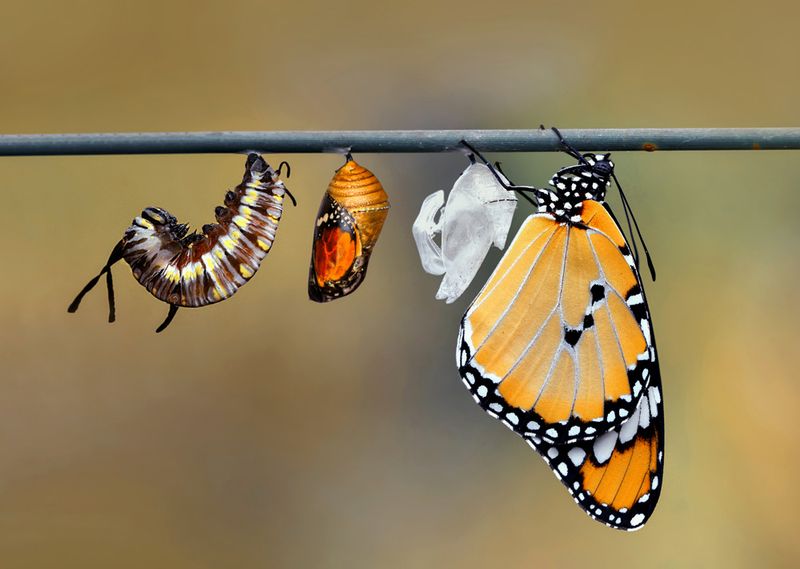
The chrysalis phase, or pupa stage, is a period of remarkable transformation. Inside this seemingly lifeless shell, the caterpillar undergoes a metamorphosis akin to a complete renovation.
Within, cells are breaking down and rearranging to form a butterfly’s features. It’s a secretive process, shrouded in mystery, where the old dissolves to give birth to the new.
The caterpillar’s organs and structures are reimagined into wings, antennae, and other butterfly characteristics, ready for emergence. This phase is crucial, marking the transition from crawling to flying.
Color Change Mystery
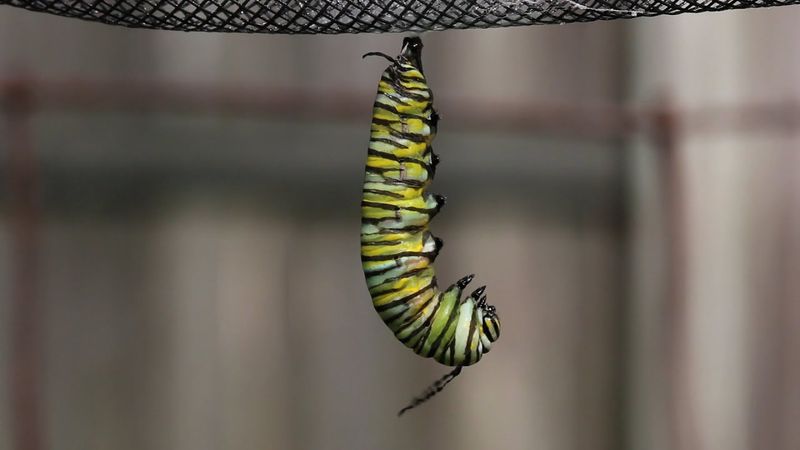
Did you know that the color of the chrysalis can change depending on its environment? This color change is a protective adaptation, helping the chrysalis blend into its surroundings and avoid predators.
As the butterfly develops inside, you may even see the colors of the wings start to show through the chrysalis shell. This phenomenon offers a glimpse into the intricate survival strategies of these creatures.
The changing colors serve as a window into the metamorphosis process, a visual cue of what’s to come.
Enter the Imago
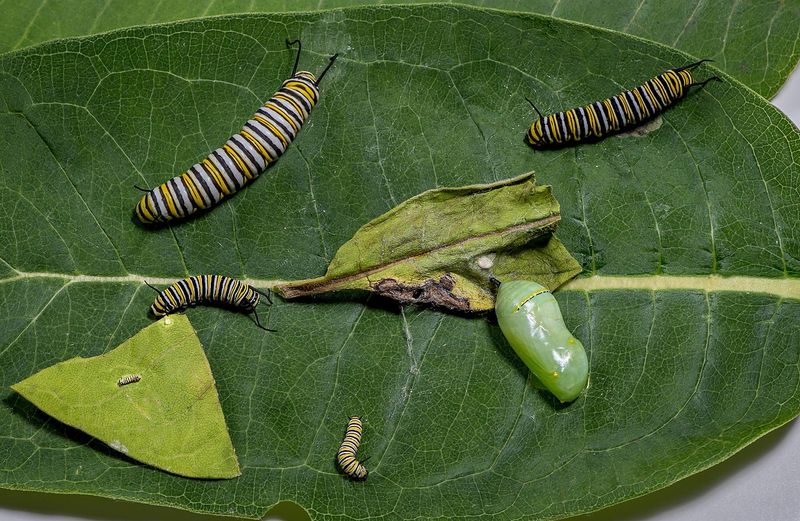
The emergence of a butterfly from its chrysalis is nothing short of awe-inspiring. Known as the imago stage, this is when the butterfly first sees the world.
The wings are initially crumpled and wet, needing time to dry and expand. During this period, the butterfly is vulnerable, but soon it will be ready to take its first flight.
The imago stage is the culmination of the metamorphic journey, representing new beginnings and freedom. This critical juncture in a butterfly’s life is marked by patience and eventually triumph.
The Role of Hormones
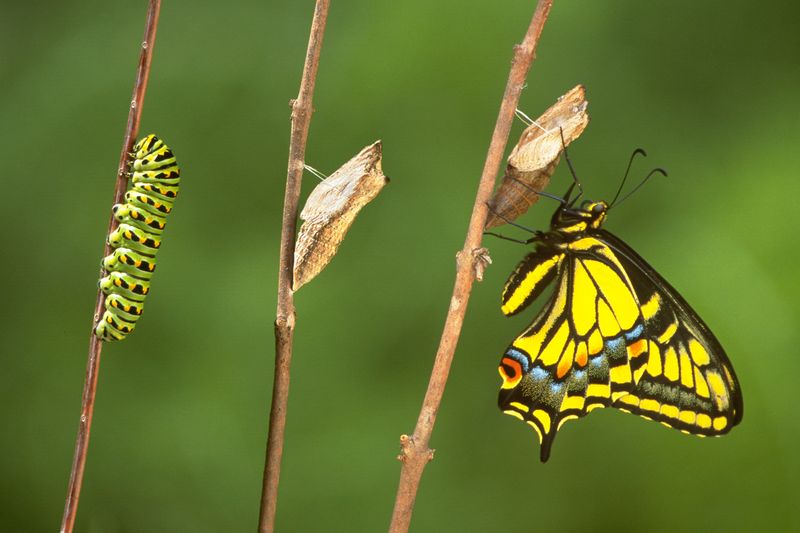
Hormones play a pivotal role in the metamorphosis from caterpillar to butterfly. Ecdysone and juvenile hormone are two key players in this process.
Ecdysone triggers molting and metamorphosis, while juvenile hormone’s presence determines the transition to the next stage. These hormones regulate the timing and progression of each developmental phase, ensuring that each stage flows seamlessly into the next.
The delicate balance of hormonal signals orchestrates the transformation, dictating when a caterpillar should molt, pupate, and finally emerge as a butterfly.
Caterpillar’s Defensive Mechanisms
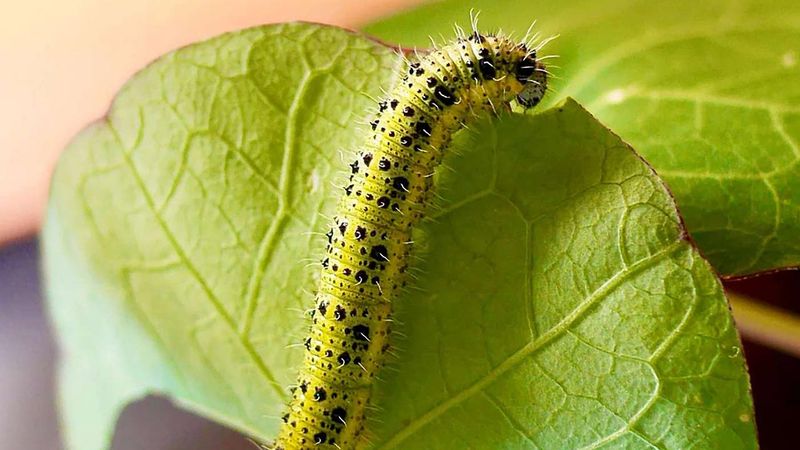
Caterpillars are not as defenseless as they seem. Many species have evolved unique defensive mechanisms to ward off predators.
Some display vibrant colors as a warning sign of toxicity, while others mimic their surroundings for camouflage. Certain species even have spines or bristles that are irritants to potential threats. These adaptations are crucial for survival during the vulnerable stages of growth.
By leveraging these defense strategies, caterpillars can deter predators long enough to reach the safe haven of the chrysalis stage, where transformation awaits.
The Magic of Silk
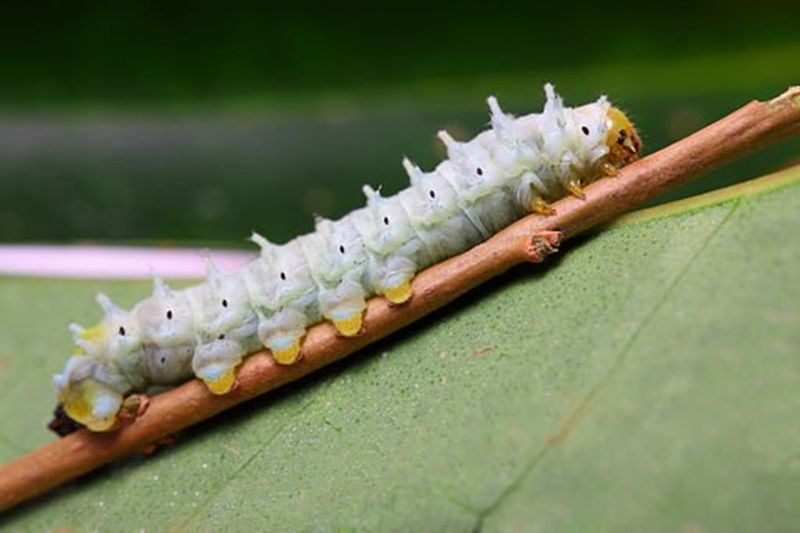
Silk is more than just a marvel of nature; it’s a vital tool for caterpillars. They spin silk to anchor themselves to surfaces during molting or to construct protective shelters.
This silk, produced from specialized glands, can be incredibly strong relative to its size. Caterpillars use this silk as a safety line, ensuring they remain secure while feeding or resting.
The silk’s versatility and strength are testament to the caterpillar’s ingenuity, providing both protection and a foundation for the transitional chrysalis stage.
Breathing Through Spiracles
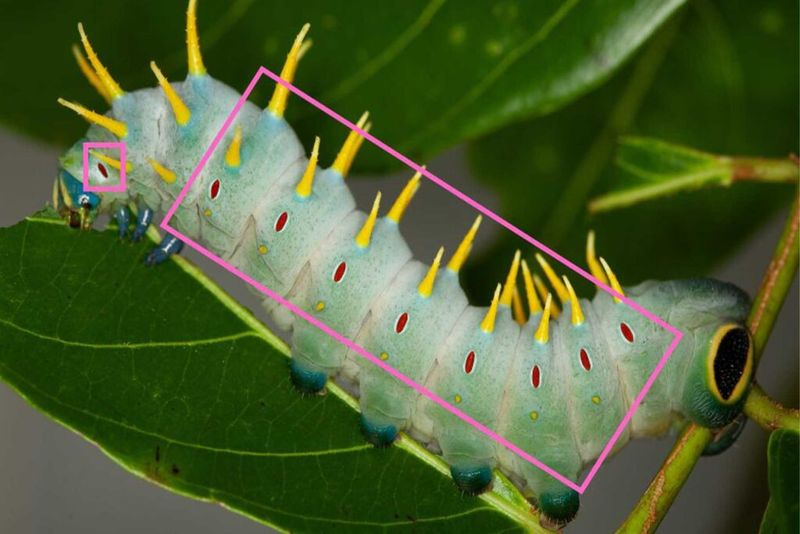
Caterpillars breathe through tiny openings along their bodies called spiracles. Unlike mammals, they lack lungs, relying on these spiracles to intake oxygen and expel carbon dioxide.
The spiracles connect to a network of tubes that distribute oxygen throughout the caterpillar’s body. This breathing system is efficient and supports the caterpillar’s active feeding lifestyle. As the caterpillar grows and molts, new spiracles form, ensuring adequate oxygen supply.
This unique respiratory system highlights the adaptations that caterpillars have evolved to thrive in their environment.
Senses Beyond Sight
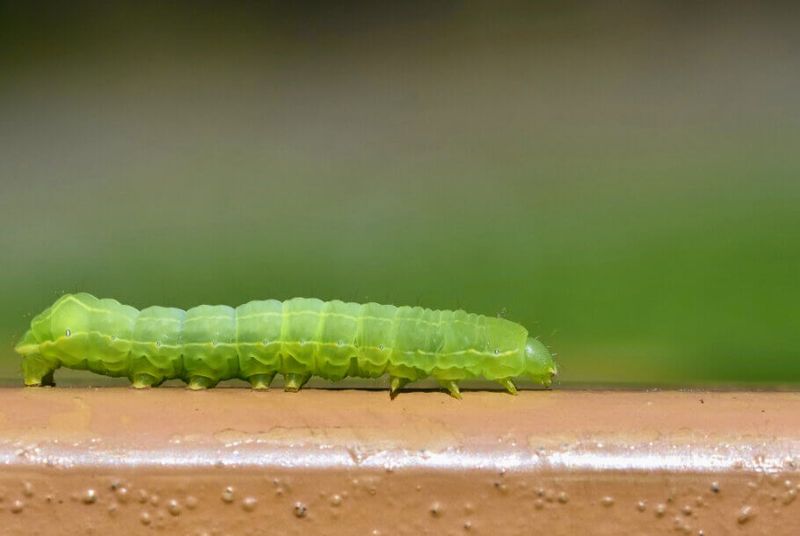
Despite having limited vision, caterpillars possess an array of other senses. Tiny eyes, known as ocelli, can detect changes in light intensity but not detailed images.
However, their antennae are highly sensitive and help navigate the world. These antennae can detect chemical signals, vibrations, and even temperature changes.
Additionally, caterpillars have setae, small hair-like structures that provide sensory feedback. This sensory toolkit enables them to find food, avoid danger, and ultimately choose the right time and place for metamorphosis.
Feeding Frenzy
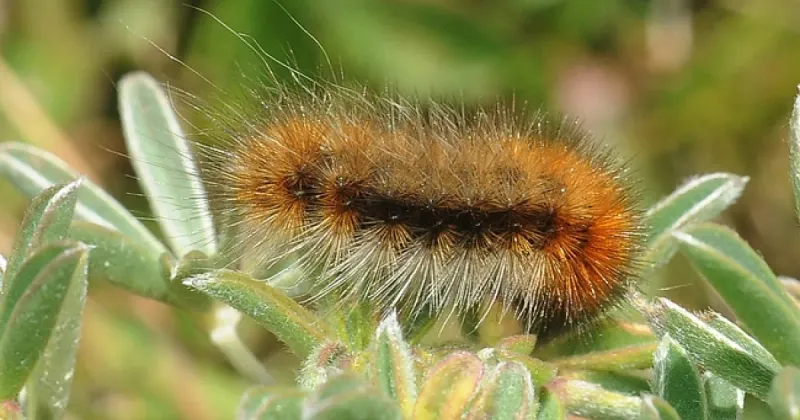
Caterpillars are voracious eaters, consuming vast amounts of foliage to fuel their growth. Their mouthparts are specially adapted for chewing leaves, allowing them to efficiently break down plant material.
This feeding frenzy is essential for accumulating the energy required for metamorphosis. A single caterpillar can consume several times its body weight in leaves, rapidly increasing in size.
This intense feeding period is crucial, as the energy reserves built up will sustain it through the pupal stage, where feeding ceases entirely.
The Dance of Instincts
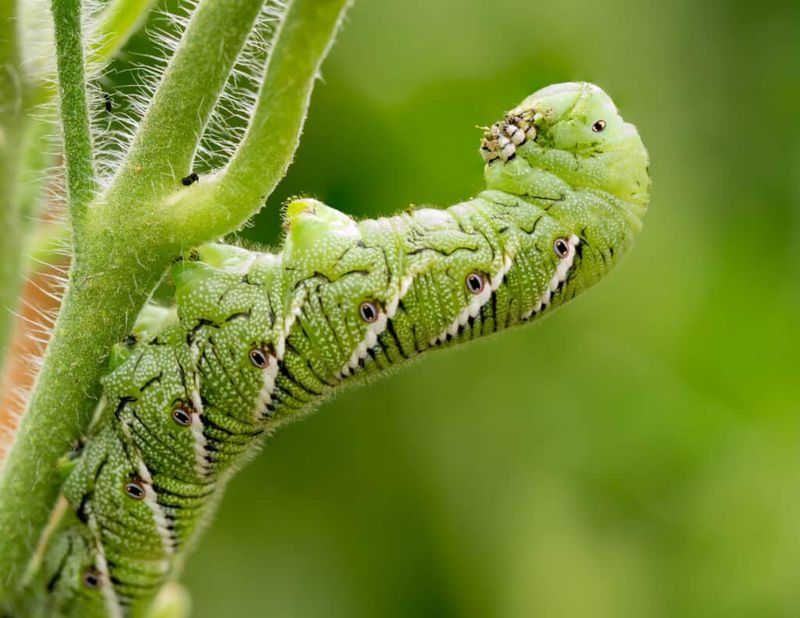
Guided by instinct, caterpillars know precisely when to molt, what to eat, and where to create their chrysalis. These instincts are hardwired, passed down through generations.
They follow chemical cues and environmental signals, ensuring they make the right choices for survival. This dance of instincts leads them through the critical phases of life, from a tiny egg to a magnificent butterfly.
This innate behavior is a testament to the evolutionary success of caterpillars, allowing them to thrive across diverse habitats.
The Butterfly’s First Flight
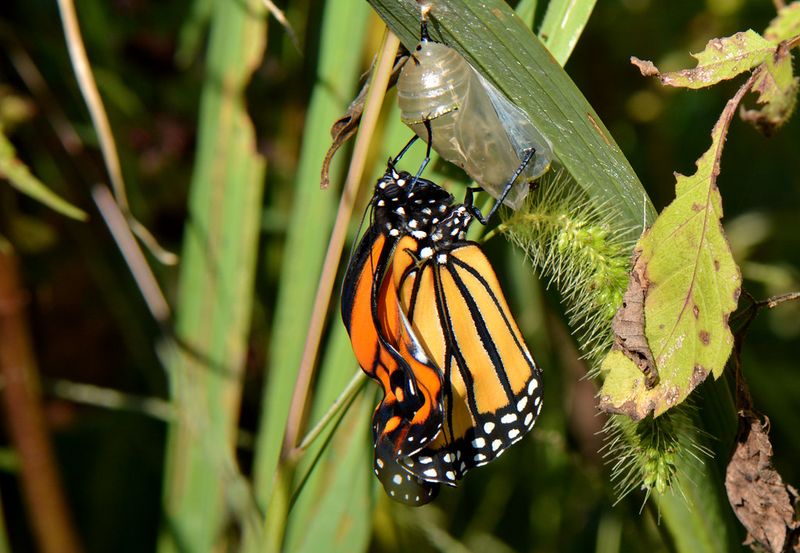
The moment a butterfly takes its first flight is a triumph of nature. After emerging from the chrysalis, it must pump blood into its wings to expand them fully.
This delicate process requires patience as the butterfly prepares to soar. Once the wings are dry and strong, it takes to the sky, embarking on its journey of pollination and exploration.
This first flight is more than just a beginning; it’s a symbol of transformation, resilience, and the endless possibilities that lie ahead.

